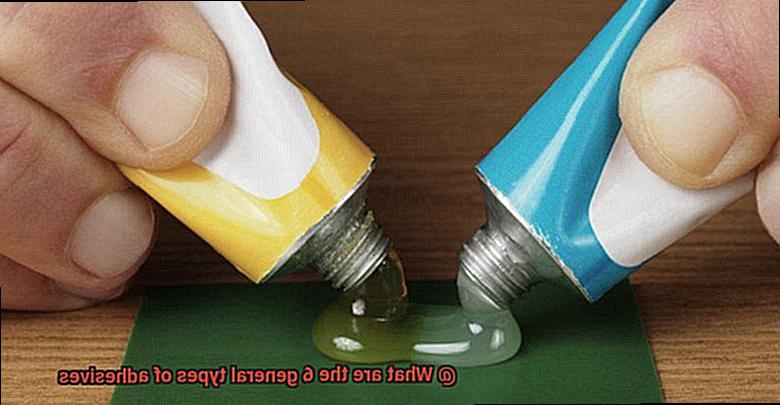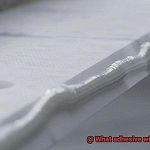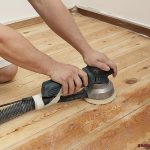Hey there, welcome to our blog. Today, we’re diving into the fascinating world of adhesives – those magical sticky things that hold everything together. Whether you’re a crafty genius, a DIY master, or just someone who’s curious about how stuff sticks, this post is gonna blow your mind.
So, let’s get down to business. When it comes to adhesives, there are six general types that can handle pretty much any bonding job. We’ve got pressure-sensitive adhesives that are like the chameleons of sticking – they can bond to all sorts of surfaces with just a little bit of pressure. Then we’ve got heat-activated adhesives that go from zero to super-strong when you hit ’em with some heat.
But wait, there’s more. We also have water-based adhesives that are perfect for all your arts and crafts projects. Plus, there are solvent-based adhesives for those heavy-duty jobs where you need some serious sticking power. And don’t forget about reactive adhesives – these babies only start bonding when they come into contact with certain chemicals or UV light.
Last but not least, we’ve got hot melt adhesives that are like the superheroes of sticking – they’re solid at room temperature but turn into liquid magic when heated up.
Now that you know the basics, we’re gonna take you on a journey through each type of adhesive. We’ll spill the tea on their strengths, weaknesses, and the most common ways people use ’em. So whether you’re fixing a broken mug or building a model airplane, get ready to have your mind blown by the wonders of these sticky substances.
Stay tuned and get ready to explore the wide world of adhesives with us.
What are Adhesives?
Contents
Adhesives, also known as glues or bonding agents, are fascinating substances that have the power to bring things together. Whether you’re a DIY enthusiast or an industrial professional, understanding the different types of adhesives is essential for achieving successful bonding outcomes. In this comprehensive guide, we will explore the various types of adhesives available and their unique properties.
Water-based Adhesives:
Perfect for woodworking, paper bonding, and packaging industries, water-based adhesives are composed primarily of water as a solvent. These adhesives offer easy application, low odor, and non-toxicity. Whether you’re working on a craft project or need to stick labels, water-based adhesives provide a safe and convenient option.
Solvent-based Adhesives:
When it comes to excellent bonding strength and resistance to high temperatures and chemicals, solvent-based adhesives are the go-to choice. Formulated with organic solvents as primary carriers, these adhesives find extensive use in automotive, construction, and industrial applications.
Reactive Adhesives:
For exceptional strength, durability, and resistance to heat and chemicals, reactive adhesives are the answer. These adhesives require a chemical reaction to cure and form a bond. Epoxy adhesives fall under this category and are ideal for heavy-duty projects where reliability is paramount.
Hot Melt Adhesives:
In need of a fast-setting adhesive? Look no further than hot melt adhesives. Composed of thermoplastic polymers that melt when heated and solidify upon cooling, hot melt adhesives offer rapid bonding times and good flexibility. They are commonly used in packaging, labeling, and woodworking industries.
Pressure-sensitive Adhesives:
Think of tapes, labels, and sticky notes – pressure-sensitive adhesives (PSAs) are what make them stick. These adhesives adhere to surfaces upon the application of light pressure and do not require heat or solvents. PSAs are versatile, offering excellent adhesion to various substrates and easy removal without leaving residue.
Contact Adhesives:
When immediate bonding is required, contact adhesives are the solution. These adhesives create an instant bond when two adhesive-coated surfaces come into contact with each other. They are commonly used in laminating countertops and attaching decorative elements.
Types of Adhesives
When it comes to sticking things together, there are a plethora of adhesives to choose from. Each type possesses unique properties and is suitable for different applications. In this article, we will explore the fascinating world of glues and delve into the six most commonly used types.
Water-based Adhesives:
Water-based adhesives, like enchanting potions, blend polymers with water to create a magical bond. These eco-friendly adhesives are perfect for crafts, woodworking, and creating cardboard masterpieces. With their quick drying time, they work wonders on porous materials such as wood, fabric, and even paper.
Solvent-based Adhesives:
Solvent-based adhesives act as superheroes in a bottle, utilizing special solvents to dissolve polymers and create strong bonds in an instant. These adhesives are ideal for quick fixes in the automotive and construction industries. They exhibit their super strength by bonding materials like metal, plastic, and rubber.
Hot Melt Adhesives:
Hot melt adhesives are the trusty companions of glue guns. Initially solid, these special glues transform into a liquid state when heated. They are perfect for craft projects, woodworking endeavors, and sealing packages. Hot melt adhesives perform their magic on a variety of materials including fabric, foam, plastic, and wood.
Reactive Adhesives:
Reactive adhesives act as skilled chemists in their pursuit of creating strong bonds. They require a chemical reaction to form a durable connection between materials. These adhesives come in two or more parts that must be mixed together prior to application. Commonly used in aerospace and automotive industries, they excel at bonding materials like metal, glass, and composites.
Pressure-sensitive Adhesives:
Pressure-sensitive adhesives possess a hidden power – they stick when pressed. These enchanting glues can be found on sticky notes, tapes, and labels. They instantly form secure bonds and can be easily removed without leaving behind any sticky residue. Pressure-sensitive adhesives are perfect for materials such as paper, plastic, and glass.
Epoxy Adhesives:
Epoxy adhesives reign as the superheroes of the glue world, renowned for their exceptional strength and durability. Comprised of two parts – resin and hardener – they must be mixed together before use. Once cured, they create bonds capable of withstanding heavy loads and extreme temperatures. Construction, automotive, and marine industries frequently rely on epoxy adhesives.
Water-based Adhesives
Water-based adhesives are a fascinating and eco-friendly solution for all your bonding needs. These versatile glues offer a multitude of advantages, while still having a few limitations to keep in mind.
One of the greatest perks of water-based adhesives is their effortless application. Whether you’re a crafty DIY enthusiast or a seasoned professional, these glues are a breeze to work with. Simply grab a brush, roller, or spray and apply the adhesive to your desired materials. You can then choose to let it dry naturally or speed up the process with heat or air circulation.
In addition to their ease of use, water-based adhesives are known for their exceptional bonding capabilities on porous surfaces. Thanks to their water content, these glues have the unique ability to penetrate materials like paper and fabric, resulting in a resilient hold once the water evaporates. This makes them perfect for tasks such as bookbinding, wallpapering, and textile bonding.
But wait, there’s more. Water-based adhesives also have some other impressive benefits. For starters, they have significantly lower levels of volatile organic compounds (VOCs) compared to solvent-based adhesives. This means they’re not only safer for the environment but also for your health. Additionally, these glues are non-flammable, reducing any potential fire hazards in manufacturing settings.
Now let’s address the limitations. Water-based adhesives don’t fare well in excessively moist or humid conditions. So if your project is expected to encounter water or dampness, these glues might not be the best choice. Furthermore, they may struggle to adhere to non-porous surfaces like glass or metal due to their water content.
In conclusion, water-based adhesives are an excellent option for a wide range of applications. Their easy application, strong bonding on porous surfaces, and eco-friendly nature make them a go-to choice for many industries. While they do have some limitations when it comes to water resistance and adhesion to non-porous materials, their advantages far outweigh these drawbacks.
Solvent-based Adhesives

Solvent-based adhesives, the superheroes of the adhesive world, possess remarkable powers that can bond almost anything together. These versatile adhesives work like magic with their quick-drying abilities. But even superheroes have their strengths and weaknesses. Let’s explore the advantages and disadvantages of using solvent-based adhesives.
Advantages:
- Versatility: Solvent-based adhesives are the master of all bonds, capable of joining metals, plastics, wood, fabrics, and more. Regardless of the materials you’re working with, these adhesives are up to the task.
- Quick Bonding: When time is of the essence, solvent-based adhesives come to the rescue. With a flash of their powers, these adhesives evaporate their solvents rapidly, creating a strong bond in no time. Perfect for fast assembly or production needs.
- High Temperature Resistance: Solvent-based adhesives thrive under pressure and heat. They refuse to lose their bonding prowess, even when exposed to scorching temperatures. So if your project involves extreme conditions or heat exposure, these adhesives won’t back down.
Disadvantages:
- VOC Release: Every superhero has a dark side, and solvent-based adhesives are no exception. The use of these adhesives can release volatile organic compounds (VOCs) during application and drying. These VOCs contribute to air pollution and pose health risks for workers and users. To protect against these dangers, safety precautions and proper ventilation are essential when working with solvent-based adhesives.
- Environmental Impact: Another concern surrounding solvent-based adhesives is their impact on the environment. The solvents used in these adhesives often originate from petrochemical sources, which are non-renewable and contribute to carbon emissions. As sustainability takes center stage, alternative adhesive technologies are being developed to reduce this environmental impact.
Hot Melt Adhesives
Look no further than hot melt adhesives. These superheroes of the adhesive world offer lightning-fast bonding, Herculean strength, and the ability to withstand extreme temperatures. It’s no wonder they’re the go-to choice for various industries.
The first thing that sets hot melt adhesives apart is their superpower of quick setting time. As soon as you apply the adhesive, it springs into action, cooling and solidifying in an instant. This means immediate handling and assembly, perfect for high-speed production processes where time is of the essence.
But wait, there’s more. Hot melt adhesives have a secret weapon: excellent bonding strength on a wide range of substrates. Whether you’re working with plastics, metals, wood, fabrics, or ceramics, hot melt adhesives can bond them all. They are versatile like chameleons, making them ideal for packaging, woodworking, automotive assembly, electronics, and product assembly.
And let’s not forget their resistance to extreme temperatures. Hot melt adhesives are like superheroes in the Arctic or the Sahara Desert – they can handle freezing cold or scorching hot conditions without losing their bonding strength. No matter how harsh the environment, your bond will stay unbreakable.
Hot melt adhesives come in different forms to suit your needs. From handheld glue guns for small-scale projects to automated systems for larger-scale operations, there’s a hot melt adhesive application method for every situation. You can dispense the adhesive in beads, dots, or even spray it in a fine mist depending on the desired bond strength and coverage.
Reactive Adhesives
When it comes to bonding materials together, reactive adhesives are the unsung heroes that save the day. These adhesives undergo a chemical reaction to cure and form an unbreakable bond, making them a go-to solution in various industries. In this blog post, we will take a closer look at the different types of reactive adhesives and their exciting applications.
Epoxy Adhesives: The Indestructible Bond
Epoxy adhesives are the epitome of strength and durability. Made up of two components – resin and hardener – they are mixed together to activate the curing process. Once mixed, epoxy undergoes a transformation akin to a superhero’s metamorphosis, hardening into an incredibly strong bond. With their outstanding resistance to chemicals and temperature fluctuations, epoxy adhesives are widely used in construction, automotive, and aerospace industries.
Polyurethane Adhesives: The Versatile Chameleons
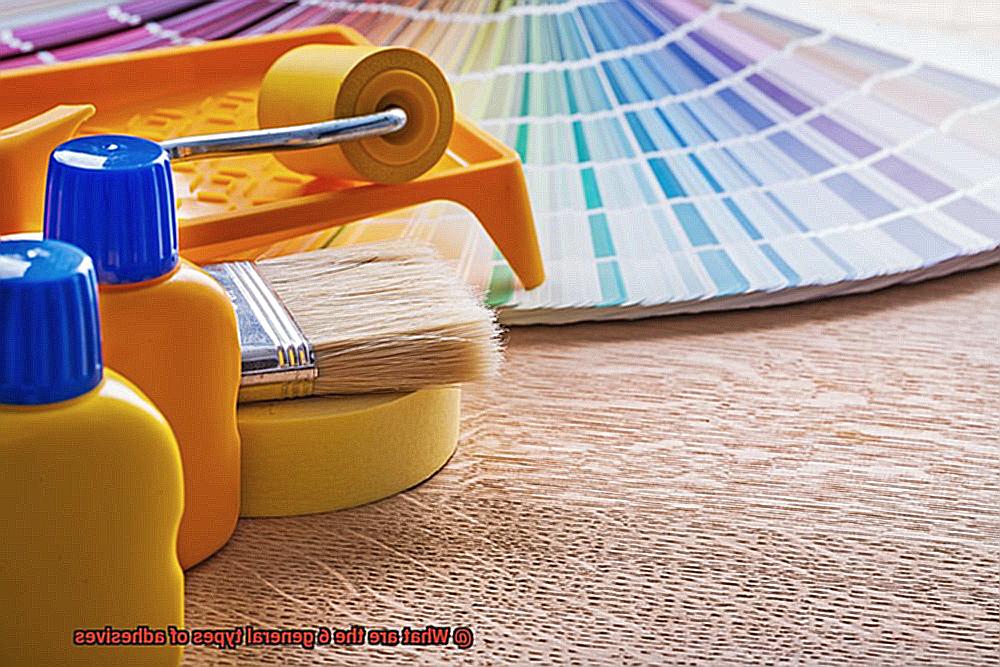
Polyurethane adhesives are known for their versatility and ability to bond a wide range of materials, from plastics to metals and wood. Like chameleons adapting to their surroundings, polyurethane adhesives flex and elongate with the materials they bond. This flexibility makes them ideal for applications that require some degree of movement or flexibility, such as furniture manufacturing, automotive assembly, and construction.
Acrylic Adhesives: The Quick Assemblers
If speed is what you need, acrylic adhesives are your best bet. These adhesives cure rapidly, resembling lightning bolts striking with precision. They offer excellent resistance to environmental factors like moisture, UV radiation, and temperature variations. Acrylic adhesives find their calling in electronics manufacturing and medical device production where quick assembly is crucial.
Cyanoacrylate Adhesives: The Instant Fixers
Known as super glues, cyanoacrylate adhesives possess a superhero-like power to bond materials rapidly upon contact with moisture. Like a flash of light, they instantly create a strong bond that can withstand the forces of gravity and time. These adhesives are perfect for joining rubber, metal, and plastic, making them indispensable in industries like electronics, medical devices, and woodworking.
Silicone Adhesives: The Extreme Survivors
Silicone adhesives are the ultimate survivors, with exceptional resistance to extreme temperatures, chemicals, and weathering. They possess the strength to endure the harshest conditions, much like a superhero rising above adversity. Their ability to bond a wide range of materials, including metals, plastics, and glass, makes them invaluable in the automotive, aerospace, and construction industries.
Pressure-sensitive Adhesives
These remarkable adhesives provide instant adhesion with just a little pressure, making them the perfect choice for a wide range of applications. Let’s delve into the properties and advantages of PSAs, and discover why they are essential in so many industries.
Unlike other adhesives, PSAs don’t require any external activation or curing process. They’re ready to bond as soon as you apply a little pressure. This convenience makes them ideal for applications where quick bonding is needed, such as labels, tapes, and decals. Imagine being able to stick something instantly without any wait time.
So, what gives PSAs their super-sticky powers? PSAs are composed of three main components: a viscous adhesive polymer, a tackifier, and a backing material. The adhesive polymer provides the bonding properties, while the tackifier enhances its stickiness. And the backing material? It provides support and stability. Together, these components create a versatile adhesive that can bond to a wide range of surfaces, from plastics and metals to glass and fabrics. PSAs can even adhere to uneven or irregular surfaces – talk about flexibility.
Now let’s explore the different types of PSAs. We have permanent PSAs that form a strong bond which is tough to remove without damaging the substrate. And then we have removable PSAs that can be peeled off easily without leaving any residue or causing damage. It’s like having the power to stick and unstick whenever you want. This versatility is a game-changer in many industries.
Of course, no adhesive is perfect, and PSAs have their limitations too. They may not be suitable for high-load applications or situations where high shear strength is required. Additionally, they can be sensitive to temperature and humidity changes, which could affect their adhesive properties. However, these limitations are outweighed by the numerous advantages PSAs offer.
PSAs are easy to use – just apply a little pressure, and you’re good to go. There’s no need for mixing or curing time. Plus, PSAs provide a clean and residue-free bond, making them ideal for applications where aesthetics matter. Whether you’re sticking labels on products, taping up surfaces for painting, or fixing medical devices, PSAs are here to save the day.
Contact Adhesives
These versatile adhesives offer an instant and strong bond when two surfaces come into contact, making them a go-to choice for a wide range of applications. Let’s delve deeper into the world of contact adhesives and explore their advantages and considerations.
Advantages:
- Versatility: Contact adhesives are a jack-of-all-trades when it comes to bonding materials. Whether you’re working with wood, metal, plastic, leather, or fabric, these adhesives have got you covered. From repairing furniture to crafting projects, contact adhesives can handle it all.
- Strength you can rely on: When it comes to creating a secure bond, contact adhesives excel. Their excellent bond strength makes them ideal for heavy-duty applications. Once the adhesive has dried and the surfaces are pressed firmly together, you can trust that they won’t budge.
- Surviving the elements: Contact adhesives are tough cookies that can withstand high temperatures and humidity levels. This makes them perfect for use in environments where other adhesives might fail. No matter how hot or humid it gets, your bond will remain intact.
- Flexibility is key: Once cured, contact adhesives allow the bonded materials to move without compromising the integrity of the bond. This flexibility is especially important for projects where movement is expected. Say goodbye to rigid bonds that restrict your creativity.
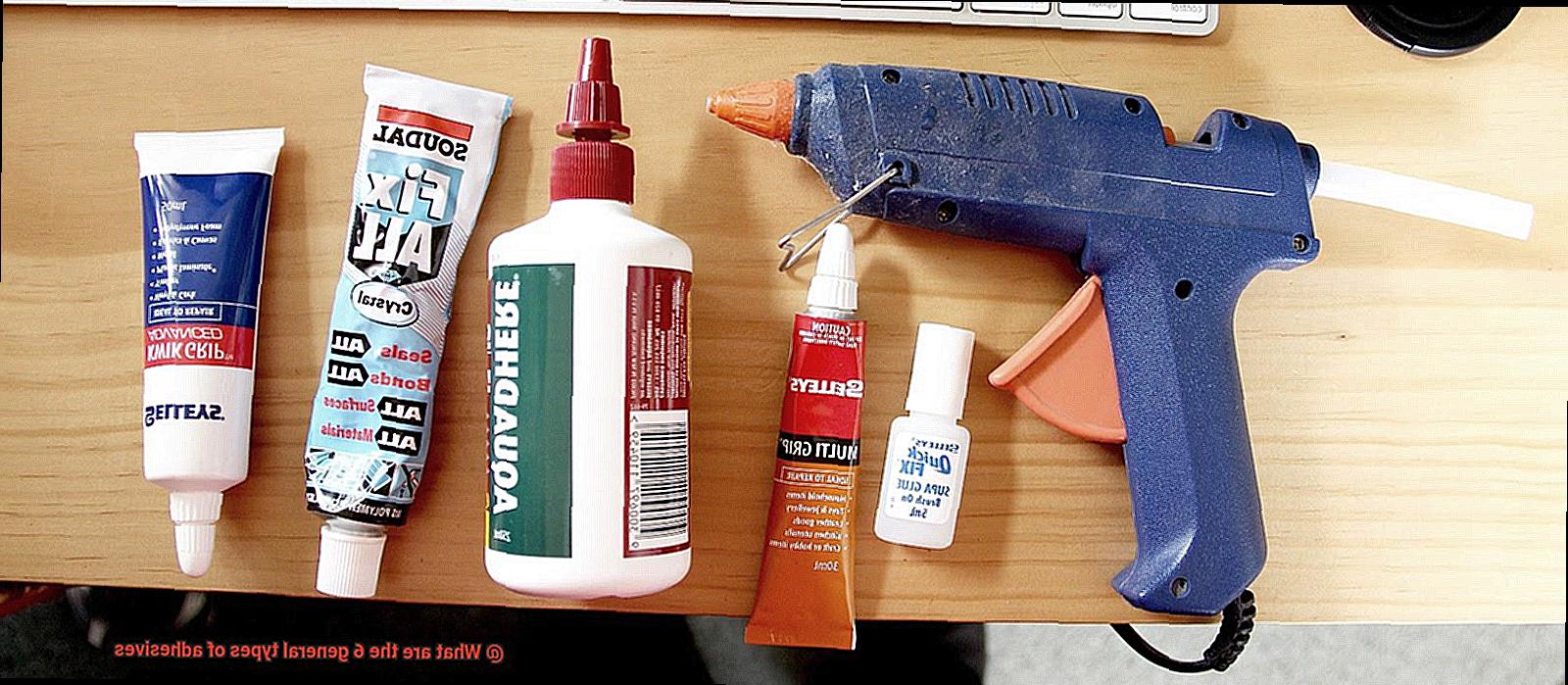
Considerations:
- Irreversibility: Contact adhesives create a bond that is not easily reversible. If you need to separate bonded materials, be prepared for potential damage. So think twice before bonding something that may need to be taken apart in the future.
- Surface preparation matters: To ensure a successful bond, proper surface preparation is crucial. Clean and roughen the surfaces as needed to provide maximum adhesion. A little extra effort in the beginning will go a long way in creating a strong bond.
- Follow the instructions: For optimal results, always follow the manufacturer’s instructions. They know their product best, so take their advice on application, drying time, and safety precautions. This will ensure that you get the most out of your contact adhesive and avoid any mishaps.
6qutTkJ4rO8″ >
Conclusion
In conclusion, there are six general types of adhesives that are commonly used in various industries and applications. These include:
- Solvent-based adhesives: These adhesives contain solvents that evaporate during the bonding process, leaving behind a strong adhesive bond.
- Water-based adhesives: As the name suggests, these adhesives are water-based and offer excellent bonding properties while being environmentally friendly.
- Hot melt adhesives: These adhesives are solid at room temperature but melt when heated. They quickly solidify upon cooling, creating a strong bond.
- Pressure-sensitive adhesives: These adhesives adhere to surfaces with light pressure and do not require heat or solvent activation.
- Reactive adhesives: These adhesives require a chemical reaction to form a bond. They often provide high strength and durability.
- UV-curing adhesives: These adhesives cure when exposed to ultraviolet light, making them ideal for applications where fast curing is required.
Each type of adhesive has its own unique characteristics and advantages, depending on the specific application requirements. It’s important to choose the right adhesive for your project to ensure optimal performance and long-lasting results.
So whether you’re working on woodworking projects, automotive repairs, or DIY crafts, understanding the different types of adhesives available can help you make informed decisions and achieve successful outcomes.
Remember, always follow the manufacturer’s instructions and take proper safety precautions when working with any type of adhesive.

